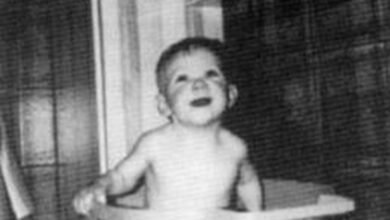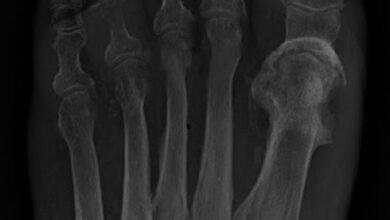
I noticed that my child is not meeting his physical development milestones.
I used to convince myself that they probably vary from child to child and that everything is OKAY!
Until one day, his doctor pointed out that he may be suffering from a rare condition called Duchenne Muscular Dystrophy.
Things suddenly got dark, and my head was swarming with questions as I searched for any piece of information that could reassure me.
These are the thoughts of a mother who just learned that her child suffered a rare genetic disease.
Read along so you can learn more about Duchenne muscular dystrophy and its treatment.
Characteristics of Duchenne Muscular Dystrophy
Duchenne is a type of muscular dystrophy that makes muscles weaker and less flexible over time.
It is the most common type of muscular dystrophy and results from defects in the gene responsible for muscle health.
Male children are more prone to this genetic defect, and symptoms start in early childhood.
Children affected with Duchenne muscular dystrophy have difficulty standing, walking, or climbing the stairs.
Duchenne muscular dystrophy causes:
Genes carry all the information the body needs to make proteins necessary for all the body functions.
Duchenne muscular dystrophy happens due to defects in the gene responsible for forming a protein called dystrophin.
Dystrophin is mainly responsible for maintaining muscle strength and protects against damage.
It is present in all skeletal muscles and essentially in the heart muscle.
When dystrophin production is affected due to the gene anomaly, muscles are gravely affected and get weaker with movement and eventually atrophy.
Is Duchenne muscular dystrophy hereditary?
Duchenne muscular dystrophy is a rare genetic disease that is transferred only through the X chromosome.
Males have one X chromosome and one Y chromosome, while females have two X chromosomes.
So if one X chromosome carries the defective gene in females, then the other is healthy, and the disease; is not manifested.
In males, however, if the X chromosome carries the defective gene, the disease is manifested.
The disease; is not passed from an affected father to his sons, but all his daughters are carriers.
A female that carries a defective copy of the X chromosome is considered a disease carrier.
She has a 50% chance of transferring the disease to her children with each pregnancy. (so the probability of passing the defective gene is 25%, in both male and female children).
The pregnant woman can be unaware that she is a carrier unless she has a family history of the disease.
Carrier females rarely express any disease symptoms.
However, sometimes they may express symptoms that are less severe than males.
Hence, it is necessary to check the heart in adolescence to ensure that it hasn’t been affected.
A carrier woman can discuss the possible options with her doctor when planning to get pregnant to reduce the chances of getting an affected child.
Management options include; IVF and genetic testing of a fertilized egg before implantation.
After pregnancy already occurred, there are two possible ways to test for Duchenne muscular dystrophy:
- Amniotic fluid test; at 15 to 18 weeks of pregnancy.
- Chorionic villus sampling (CVS); at 10 to 12 weeks of pregnancy.
Duchenne muscular dystrophy symptoms in children:
Disease symptoms are usually manifested in early childhood before the child is six years old and damage usually starts in the leg muscles.
An affected child can be late to start walking or have difficulty getting up or climbing the stairs.
The child can also sway when walking or tiptoe.
Other symptoms may include:
- Adverse effects to the heart and lungs may appear with age.
- The curvature of the spine (scoliosis).
- Contraction and shortening of the muscles of the feet.
- Headache.
- Drowsiness.
- Learning difficulties.
- Difficulty concentrating.
Contractions occur, sometimes in muscles, but generally, Duchenne muscular dystrophy is not painful, and the child can still control the bladder and intestines.
Some children may experience difficulty learning but it generally does not affect understanding of the surroundings.
How can Duchenne muscular dystrophy be diagnosed?
The doctor will first ask questions regarding the child’s symptoms, like:
- How old was the child when he started walking?
- Are his motor skills well developed? Can he run, climb the stairs or get up from the ground?
- How long have you noticed problems?
- Does anybody else in the family have muscular dystrophy? Which type?
- Does the child have difficulty breathing?
- Does he pay attention or remember things?
The doctor examines the child thoroughly to exclude any other type of muscular dystrophy, and he also asks for necessary lab tests, like:
Blood tests:
This test detects creatine kinase (CK), an enzyme released by muscle cells due to damage.
Genetic tests:
The doctor tests a blood sample to look for changes in the dystrophin gene that causes muscle atrophy.
Muscle biopsy:
The doctor removes a small piece of the child’s muscle and examines it under a microscope to check for low dystrophin levels.
Duchenne muscular dystrophy treatment:
There is no ultimate treatment for Duchenne muscular dystrophy, but some medications can help alleviate the symptoms, protect the muscles and maintain the health of the lungs and heart.
An affected child will need doctors from several medical specialties to deal with the different disease symptoms, for example:
- Neurologist.
- Orthopedic doctor.
- Heart specialist.
- Chest specialist.
- A physiotherapist.
- A geneticist.
Some of the medications commonly used to treat the disease include;
steroids
They slow muscle damage and help the lungs and heart function efficiently, like:
Prednisone
Children who take this medication can walk 2 to 5 years longer than those who don’t.
Deflazacort
The Food and Drug Administration (FDA) approved the oral corticosteroid deflazacort in 2017 to be the first corticosteroid to be used in Duchenne muscular dystrophy treatment.
The drug helps in maintaining muscle strength and the ability to walk.
Some the side effects include:
- Bloating.
- Increased appetite.
- Weight increase.
Eteplirsen
The FDA approved the use of Eteplirsin in children with a specific mutation in the gene that leads to Duchenne muscular dystrophy.
Eteplirsin is given by injection.
Although this drug supposedly increased the production of dystrophin that maintains muscle function, this hasn’t been proven yet.
Golodirsen
Golodirsen; is used with a limited number of children with a certain type of gene mutation (Exon 53), and it helps increase dystrophin production in muscle fibers.
Some hypertension medications may also help in protecting the heart muscle against damage.
Children with Duchenne muscular dystrophy may need surgery to repair shortened muscles, problems with the spinal cord, heart, or lungs.
New treatments for Duchenne muscular dystrophy:
In February 2021, the FDA approved the use of Casiersen for Duchenne muscular dystrophy patients with mutations in Exon 45.
An Exon is a fragment of genetic material (DNA) and carries the necessary information to produce the proteins the body needs.
It is considered the first approved drug for patients with this type of mutation ( Almost 8% of total patients).
Researchers noticed a marked increase in dystrophin production, which lead them to expect possible benefits like improved physical movement, but it hasn’t been proven yet.
FDA granted an urgent approval given the potential benefits and the lack of drugs for this type of mutation, but it is still under study.
Possible side effects for Casiersen:
Casiersen, however, does have some side effects, for example;
- Upper respiratory tract inflammation.
- Cough.
- Fever and headache.
- Joint pain.
- Sore throat.
A new gene therapy (Pfizer’s) is being tested to transfer the dystrophin-producing gene to patients.
Scientists continue to search for new ways to treat Duchenne muscular dystrophy in clinical trials, often as a way for patients to try a new drug that isn’t available to everyone.
You can discuss with your health care professional, whether one of these drug trials is appropriate for your child.
How can you take care of a child with Duchenne muscular dystrophy?
It is overwhelming to find out that your child has Duchenne muscular dystrophy, but that doesn’t mean he can’t go to school or play sports.
You can help a child maintain a normal lifestyle by; adhering to a suitable treatment plan, which generally includes:
Standing and walking as much as possible:
Those two activities help maintain bone strength and the backbone upright.
Walkers or standing supports can certainly facilitate standing and turning.
Maintaining a healthy diet:
There is no special diet for Duchenne muscular dystrophy patients, but eating a healthy diet prevents weight gain problems.
Therefore, it’s better to consult a nutritionist to ensure the child is eating all the necessary diet elements and the proper amount of calories every day.
You may need to consult a specialist if the child has difficulty swallowing.
Exercising:
Exercise and stretching help maintain the health of your child’s muscles and joints.
You should consult a physical therapist about the appropriate exercises for your child; to practice them safely without fatigue.
In conclusion, until recently, a child with Duchenne disease required a wheelchair by age 12 due to muscle weakness, but the current outlook is much better than before.
Also, with the advent of gene technology, the world is looking forward to new breakthrough treatments.
Read also;
Turner syndrome | Does it only affect women? | Symptoms and treatment.



